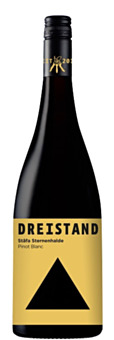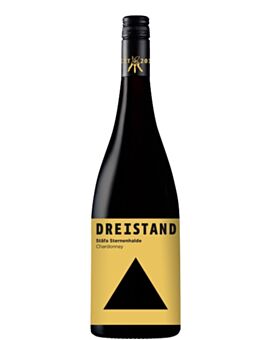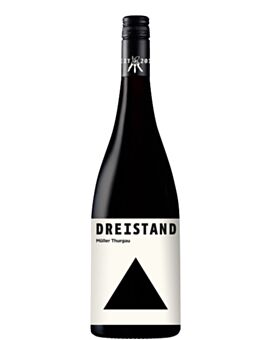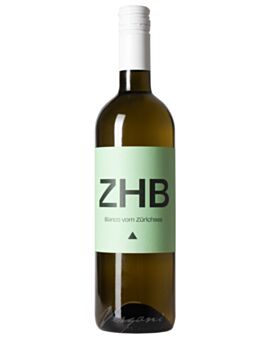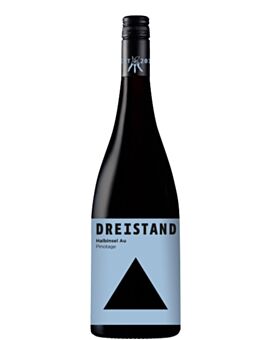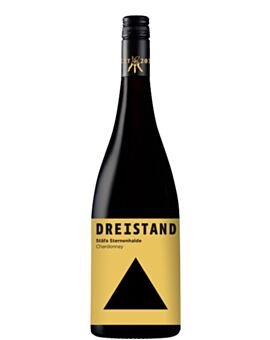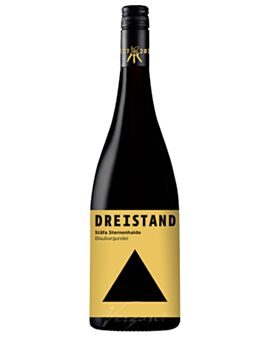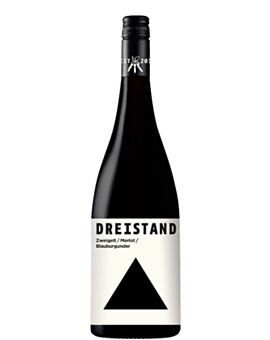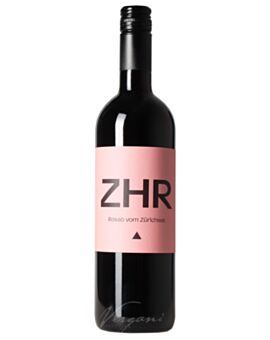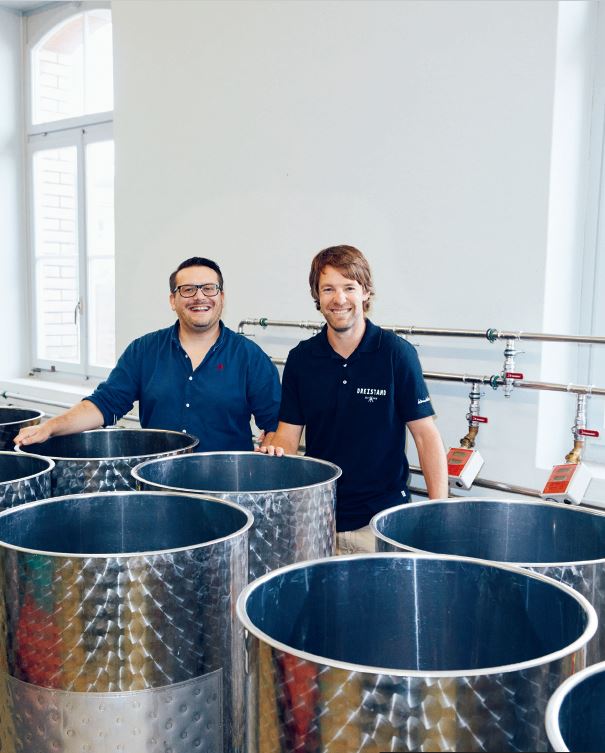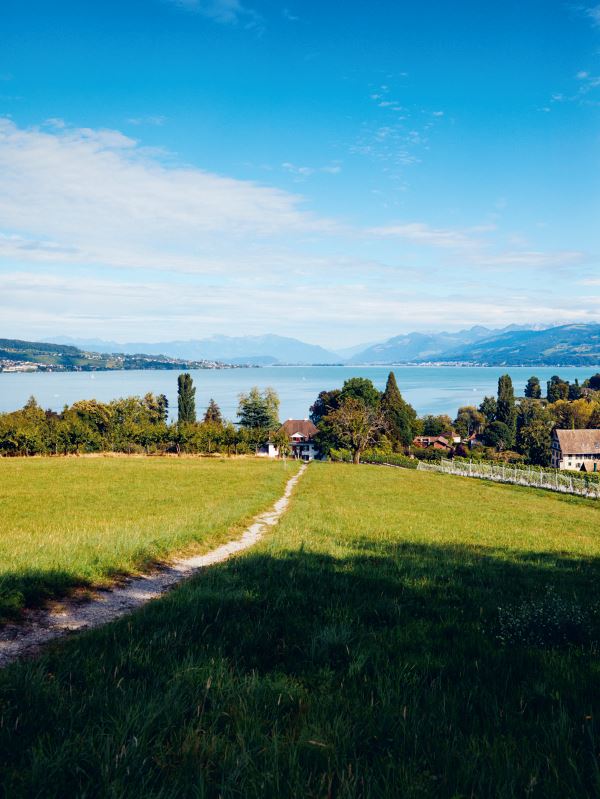Dreistand
Dreistand
Kern and Daniel Steinle explain how wine research in German-speaking Switzerland was able to stay in Wädenswil, resulting in one of Zurich's most interesting wine brands.
Looking at the Au Peninsula from a distance, one could easily complain that this patch of earth is not a real peninsula at all. It seems like a piece of land that juts out a little further into the water. Until one stands on this hill between the lake road and the lake and realizes that here is not only a climate of its own, but actually a little holiday island feeling rises up in one. Perhaps this is why the peninsula is one of the most popular excursion destinations on Lake Zurich. However, we are not interested in the place because holiday feelings blossom here, but above all because wine grapes grow here - those of the very young wine brand Dreistand. Behind the Dreistand wines is the Wädenswil wine-growing center, which is also only two years old, and which was born out of an emergency situation.
In 2018, the Federal Council decided to close Agroscope, Switzerland's federal centre of excellence for agricultural research in Wädenswil, and to concentrate Agroscope's wine research activities in Changins. This would have meant that German-speaking Switzerland would have lost an important research location for viticulture. The fact that the wine pioneer Hermann Müller-Thurgau had been the first director of the wine research institute here in Wädenswil in 1891 weighed even more heavily. As well as that the wine school would have been lost at the same time. In order to preserve the location, the Zurich University of Applied Sciences (ZHAW), the Strickhof Institute for Continuing Education, the Brachenverband der Deutschschweiz and Agroscope joined forces and launched the Wädenswil Viticulture Centre. The new institution also included three vineyards - one in Stäfa, one on the Au peninsula and another in Wädenswil. They would be the three legs for the wine brand Dreistand, which was also newly launched.
"Every self-respecting winery does research."
Daniel Steinle, Dreistand
While the viticultural center is now continuing to research modern and fungus-resistant grape varieties and clones, always with an eye on environmental protection, a trio is taking care of the Dreistand wine brand: Lorenz Kern and Thierry Wins as oenologists, and Daniel Steinle as sales and marketing manager. So, if you think the Dreistand wine brand is just a by-product of the wine research institution, you are wrong. "With the foundation of the viticultural center, we additionally wanted to get away from the pure research character and to develop a full-fledged wine brand of our own", Lorenz Kern says. Of course, the Dreistand wines would definitely benefit from the research findings: For instance, there is a red wine available from Dreistand which was vinified out of the brand-new Divico grape. Divico was approved as an own variety as late as in 2013; it often takes several decades until a new variety is approved. Divona, its sister, is even younger and has been officially available as late as in 2018.
Other modern grape varieties also find their way into Dreistand bottles: Souvignier Gris, for example, or Kerner. The question of how many different wines Dreistand produces makes Lorenz and Daniel laugh. "We don't know that exactly right now." Daniel estimates that there are about 20 different wines. "We're still in the process of finding them," adds Lorenz. The customer doesn't notice this, however, because the concept is professional and sophisticated. For example, Dreistand wines have a wine label that no one will forget in a hurry: The label is emblazoned with a dominant equilateral triangle that stands for the three locations of Stäfa, Wädenswil and Halbinsel Au. Three-stand vines grow on 10.5 hectares in total, with the site on the south side of the Au peninsula accounting for the largest share at 5.5 hectares. "We produce a total of about 50,000 bottles a year," says Lorenz. Thanks to the close cooperation with Vergani, customers included mainly high-end restaurants interested in regional products. They would make sure to press wines typical of the region: elegant and lean wines. "Real Lake Zurich drops with power, but without overload," says Daniel. However, even the three-star trio does not completely forgo research and experimentation. "Every self-respecting winery does research," says Daniel. For example, they harvest grapes at different times in the fall. They fiddle with different yeasts, try out different barriques and containers, or let the wines age at different conditions. "Currently, we are testing fermentation in the new types of plastic, concrete and granite eggs," says Lorenz. The knowledge gained will later also be passed on to Swiss winemakers.
Out of the cellar, off to the holiday island: During a tour around the Au peninsula, Lorenz Kern points out the numerous varieties that grow here. The dense Kerner thrives here as well as the South African Pinotage grape. Next to rows of white Souvignier Gris', there are vines on which the chubby Zweigelt grapes hang like little pugs. But that's not all: because the wine-growing museum is also located here, interested visitors can find grapes from all over the world: a total of 190 varieties are cultivated and cared for on site, thus forming an important archive of viticulture. Which makes the Au Peninsula more than just a paradise for excursionists - and, by the way, also a real peninsula.





